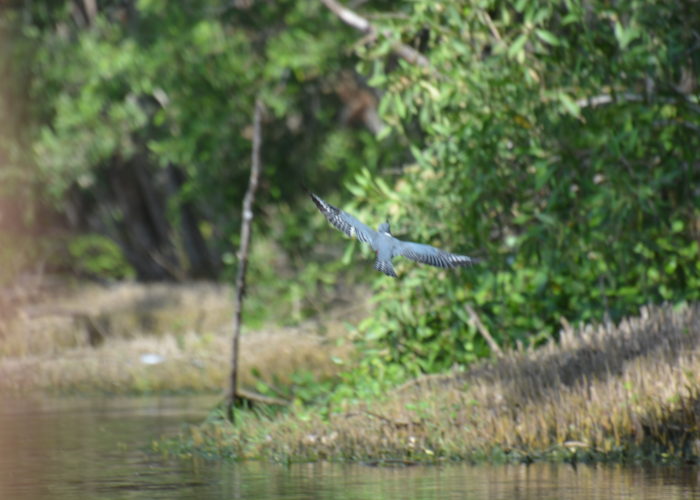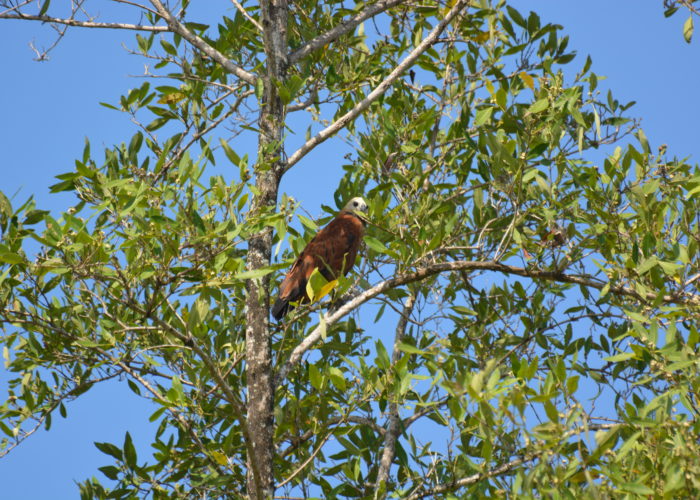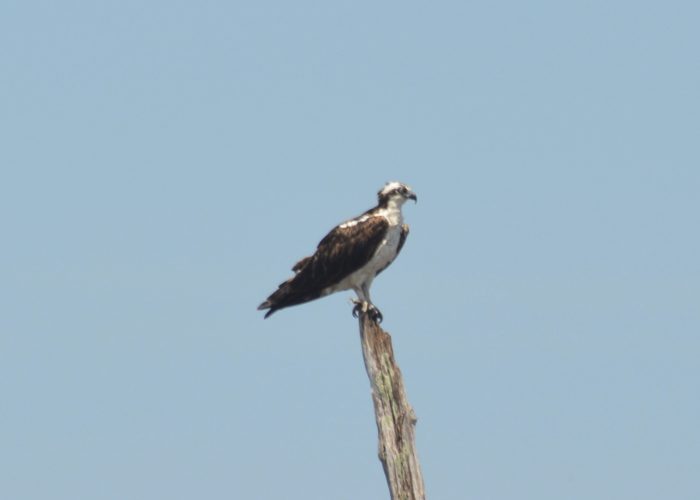Our Dragoman truck next took us over the Couratyne River to Suriname on an old ferry, which only operates once a day. Entering Suriname, we had to purchase a tourist card for EUR35, the first visa on our journey that we had to pay for, unlike our Australian and American colleagues who have to pay a reciprocity fee in pretty much every South American country. Unfortunately, we had to leave one of our Irish passengers at the border as for some reason they needed a more complicated visa and she had to return to Georgetown, Guyana to purchase one.

History & Economy
Colonised by the Dutch in 1667, Suriname was initially contested by the British. The Treaty of Breda, in which the English ceded Suriname to the Dutch in exchange for New Amsterdam (modern-day New York), cemented its status as a Dutch colony. Although most of the Dutch colonies were focused on trade in the East Indies, Suriname provided an important sugar plantation economy in the Caribbean region. Suriname was a plantation economy for much of its history, with sugarcane and other plantation crops driving wealth, supported by enslaved labour. The legacy of slavery is still felt in the country’s racial composition, which includes Afro-Surinamese (descendants of enslaved peoples), Javanese, Indians, and Chinese. Despite this Dutch legacy, the British influence remains strong, with Suriname driving on the left, like Guyana and the UK, instead of the right like the Netherlands or the rest of South America.
Suriname, with a population of around 600,000, is situated on the northern coast of South America, is a fascinating blend of Dutch colonial history and vibrant natural landscapes. It gained independence from the Netherlands on 25th November 1975. A small country with a rich cultural mosaic, Suriname boasts a unique fusion of indigenous, African, Indian, Indonesian, and European influences. The official language is Dutch, yet English and regional dialects are also widely spoken. Paramaribo, the capital, is renowned for its preserved colonial wooden buildings and is a UNESCO World Heritage site. Suriname’s diverse ecosystem, from coastal mangroves to tropical rainforests, teems with wildlife.
Geography & Climate
Suriname’s geography includes vast rainforests, extensive wetlands, and Dutch-style polders – areas of reclaimed land protected by dykes, particularly around Nickerie. Much of the land is low-lying and prone to flooding, especially during the rainy season. The country’s climate is tropical, with two rainy seasons (May–August and November–February) and a humid but warm environment year-round. Coastal areas like Bigi Pans are especially wet and attract an array of water birds.
Suriname’s economy once heavily relied on bauxite mining, which was the main driver of growth for much of the 20th century. However, the bauxite industry has significantly declined, leading the country to diversify its economy, turning to gold, timber, and oil extraction. There’s also a growing focus on ecotourism, capitalising on its pristine rainforest and rich biodiversity. Illegal logging and mining remain challenges.
A large proportion of Suriname’s population that have family ties and connections with the Netherlands with many Surinamese nationals living and working there. The local television imports much of its programming from the Netherlands, including the evening news which they time delay and broadcast. Indeed, a number of the famous Dutch footballers of recent years had their ancestral roots in Suriname.
Ecotourism is a growing industry, particularly around the country’s pristine rainforests and wildlife reserves. However, unsustainable mining and deforestation have raised environmental concerns.

Food
Suriname’s cuisine is a reflection of its multicultural heritage. Dutch influences remain strong in dishes such as kroketten and stroopwafels, while the country’s large Javanese population has introduced Indonesian dishes like nasi goreng, satay, and bami. The rich use of spices and flavours from various immigrant communities, including Indian, African, and Chinese, makes Suriname’s food scene incredibly diverse.
Principal Sites
Nieuw Nickerie
Nieuw Nickerie, a modern town on Suriname’s western border, supports the surrounding agricultural landscape, mainly sugarcane and rice. Staying at Concordia, you experience the flat, reclaimed land of Dutch-style polders, complete with canals and dykes. The nearby Bigi Pans area is a haven for wildlife, particularly birds.

Bigi Pans
At Bigi Pans, staying in Bigi Pans Lodge, a wooden building constructed on stilts in the middle of the waters, you’re surrounded by a surreal landscape of lakes below sea level. Getting there we took a small boat through the canals (a bit of the Netherlands meets the tropical jungle) to the open water at Bigi Pans where there are a small number of wooden houses built on stilts in the middle of the lake. The whole area is below sea level and is a haven for water birds. This is a paradise for birdwatchers, with its abundance of scarlet ibis, flamingos, and Amazon kingfishers. A night safari revealed a boa constrictor and other nocturnal wildlife, while fish constantly leapt out of the water, with one ending up as dinner.
Paramaribo
Paramaribo, the capital of Suriname, is a lively city blending colonial Dutch architecture with a diverse cultural heritage. Located on the banks of the Suriname River, Paramaribo boasts historic wooden buildings, some of which date back to the 17th century. The city’s most notable site is the St. Peter and Paul Cathedral. Paramaribo’s multicultural population reflects the country’s history of colonisation and immigration, with influences from Dutch, Indian, African, Chinese, and Javanese communities. Visitors can explore the UNESCO-listed historic centre, walk along the Waterkant promenade, or visit the Fort Zeelandia Museum, a reminder of its colonial past. The markets and street life offer a taste of the vibrant fusion of flavours, languages, and traditions that define the city. Staying at Gess Hotel, we were in the heart of this colonial city and UNESCO World Heritage site.

St Peter & St Paul Cathedral
This remarkable wooden structure, the largest wooden building in the Western Hemisphere, was built entirely of wood and has been beautifully restored. The interior’s wooden panelling, polished to a gleaming finish, provides a serene space for worship.
Fort Zeelandia
A remnant of Suriname’s colonial past, this fortress stands on the banks of the Suriname River and played a crucial role in the defence of Paramaribo during the colonial era. Today, it houses a museum that details the country’s history.

Government Buildings
The stately presidential palace is one of the most elegant in Paramaribo, while other colonial-era government buildings, though needing restoration, display the Dutch architectural influence.
Markets
Paramaribo’s bustling markets are lively places to visit, selling everything from fresh produce to household items. Indian-descended vendors dominate, and the market is also known for its smoked fish and an array of spices.
Statue of the Dutch Queen
In front of the government buildings stands a statue of Queen Wilhelmina of the Netherlands, reflecting the colonial ties that remain prominent in Suriname’s cultural landscape, much like the Queen Victoria statue in Georgetown.

Anaula Nature Lodge
The journey inland to Anaula Nature Lodge takes you into the depths of Suriname’s untouched jungle, along the Suriname River. The lodge is beautifully set in the rainforest, and the river acts as the primary route for transport and communication for the local communities. The region is rich in wildlife, with the jungle alive with the sounds of tropical birds, monkeys, and the rustling of leaves from passing wildlife.

Wildlife
Suriname is home to an incredible variety of species. In Bigi Pans, you’ll spot stunning scarlet ibis and flamingos, which make for an unforgettable sight against the vibrant green backdrop of the wetlands. The rainforests around Anaula are teeming with life, including reptiles like caimans and snakes, along with a plethora of bird species.
Environmental Challenges
Suriname faces numerous environmental challenges, primarily related to logging and mining. The gold mining industry, in particular, has left significant scars on the landscape, with the use of mercury in gold extraction poisoning rivers. Conservation efforts are in place, but the lure of valuable resources poses ongoing difficulties.
Final Thoughts
Suriname offers a distinctive experience, a combination of Dutch colonial charm, Caribbean warmth, and South American wilderness. The contrast between the ordered streets of Paramaribo and the untamed jungles of Anaula showcases the country’s rich diversity. With its expanding ecotourism sector and continued cultural ties to the Netherlands, Suriname is a fascinating destination, offering a glimpse into both the colonial past and the untouched natural beauty of South America.
Dates: 05/10/2018 to 12/10/2018 – Dragoman Days 9 to 16

















